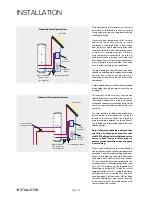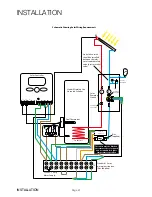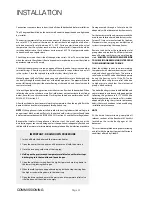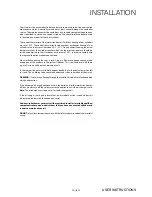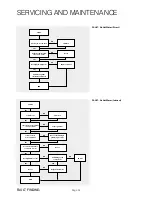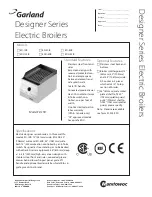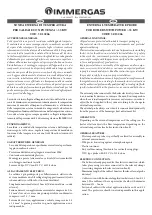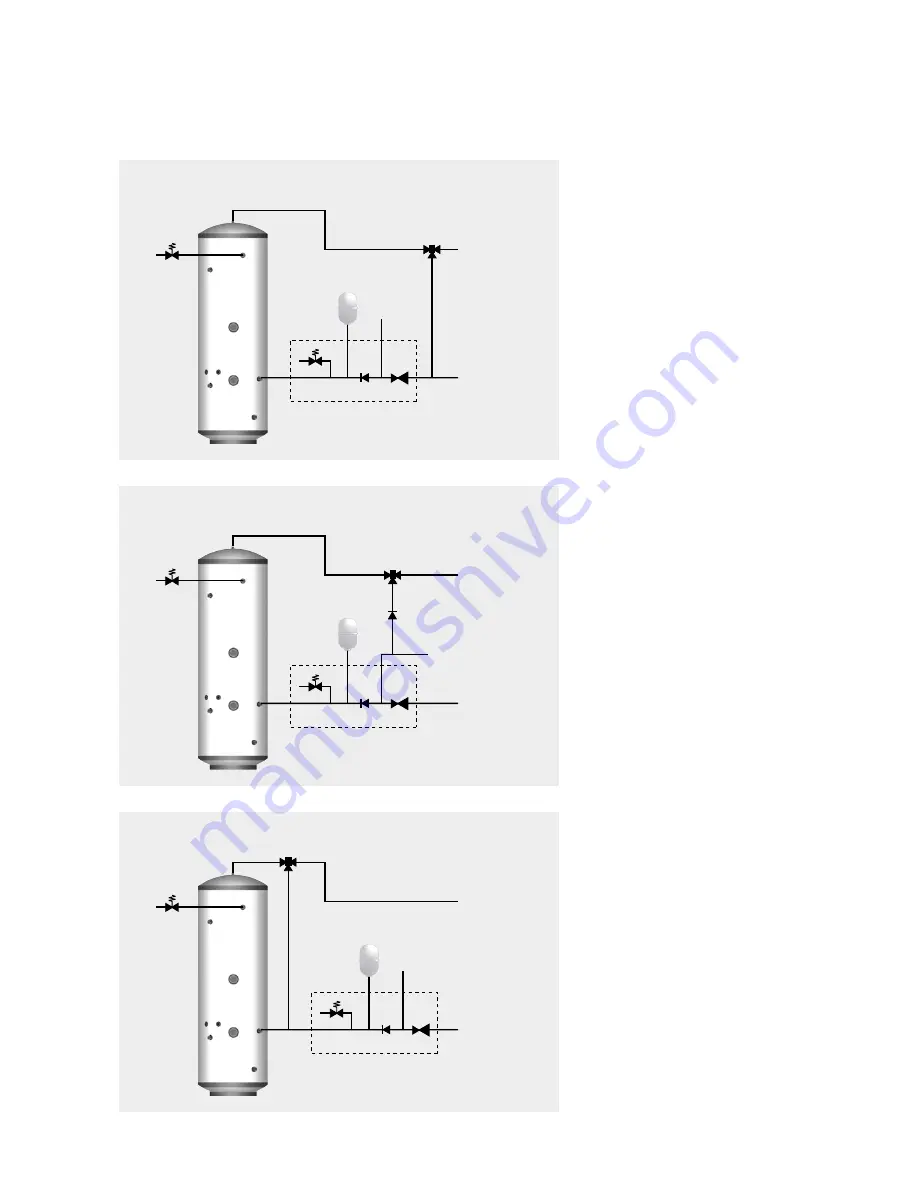
Page 19
Mixed HW out
Mains CW in
Figure 1: Cold port of the blending valve connected to mains supply
NOT ALLOWED
Mixed HW out
Mains CW in
Figure 3: Cold port of the blending valve connected to mains supply
to the vessel after the inlet control group
Mixed HW out
Mains CW in
Non-Return Valve (must be fitted)
Figure 2: Cold port of the blending valve connected to balanced cold
supply - NON-RETURN VALVE MUST BE FITTED
Fitting Blending Valves To The Unvented
Stainless Lite Appliances
When fitting a blending valve to the unvented
appliances, it is important that the installation
does not contravene the G3, WRC and Health
and Safety directives or the manufacturers
recommendations. If this is the case, then
the warranty should be null & void. The key
requirements to comply with these regulations
are: -
1. Any fitting or material in contact with
potable water (e.g. a blending valve) must
be approved by WRC or an equivalent body.
2. Connections or wiring arrangements must
not bypass any safety devices.
3. Any expansion due to heating must not be
allowed to expand back into the cold mains.
4. The settings of any safety devices must not
be tampered with or adjusted.
The diagrams opposite shows how the
blending valve can be piped onsite.
Figure 1 shows the cold water port of the
blending valve connected to the mains cold
water supply before the inlet control group.
This arrangement is completely unacceptable
and illegal because: -
• the water is allowed to expand in to mains
cold water supply.
• the vessel will be charged to the incoming
mains supply which may be considerably
higher than the working pressure of the
vessel.
If this arrangement is used then the Gledhill
warrant will not be valid.
Figure 2 shows the cold water port of the
blending valve connected to the balanced
cold water outlet. This arrangement will only
be acceptable if a WRAS approved non-return
valve is fitted, otherwise: -
• during the heating cycle, the water will
expand back into the mains supply, as the
regulating valve must not be relied upon
to act as a check valve under all operating
conditions.
• depending upon the characteristics of the
blending valve, hot water may also flow from
the balanced cold water taps.
Figure 3 shows the cold port of the blending
valve connected to the cold water supply to the
vessel after the inlet control group. This should
be the preferred method. It is recommended
that the installer should ensure that there is no
gravity circulation in the pipework connected to
the cold port. If necessary, this can be achieved
by fitting a non-return valve or using a thermal
trap.
INSTALLATION
INSTALLATION
✗














